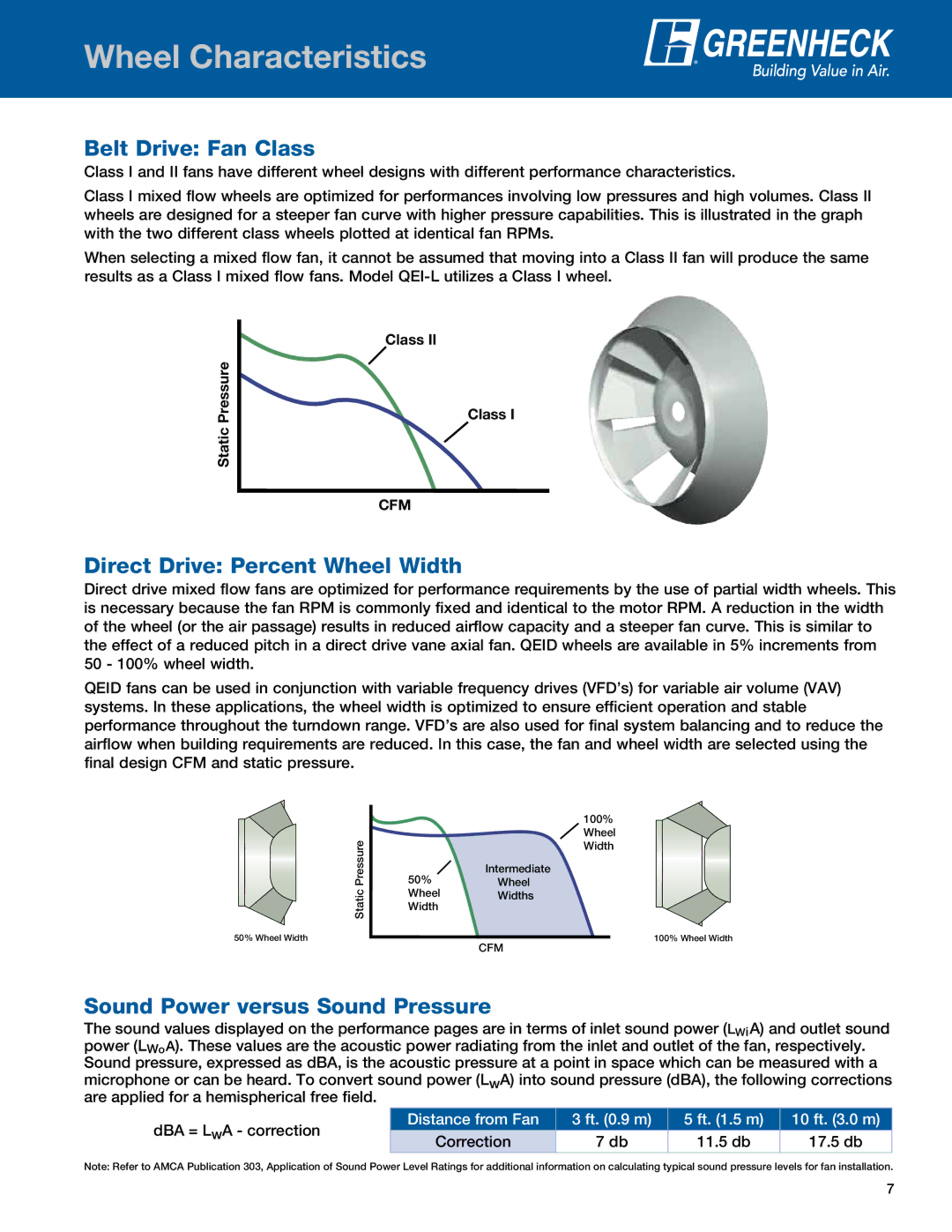
Wheel Characteristics
Belt Drive: Fan Class
Class I and II fans have different wheel designs with different performance characteristics.
Class I mixed flow wheels are optimized for performances involving low pressures and high volumes. Class II wheels are designed for a steeper fan curve with higher pressure capabilities. This is illustrated in the graph with the two different class wheels plotted at identical fan RPMs.
When selecting a mixed flow fan, it cannot be assumed that moving into a Class II fan will produce the same results as a Class I mixed flow fans. Model
Static Pressure
Class II
Class I
CFM
Direct Drive: Percent Wheel Width
Direct drive mixed flow fans are optimized for performance requirements by the use of partial width wheels. This is necessary because the fan RPM is commonly fixed and identical to the motor RPM. A reduction in the width of the wheel (or the air passage) results in reduced airflow capacity and a steeper fan curve. This is similar to the effect of a reduced pitch in a direct drive vane axial fan. QEID wheels are available in 5% increments from 50 - 100% wheel width.
QEID fans can be used in conjunction with variable frequency drives (VFD’s) for variable air volume (VAV) systems. In these applications, the wheel width is optimized to ensure efficient operation and stable performance throughout the turndown range. VFD’s are also used for final system balancing and to reduce the airflow when building requirements are reduced. In this case, the fan and wheel width are selected using the final design CFM and static pressure.
Static Pressure
100% Wheel Width
Intermediate
50%Wheel
Wheel Widths
Width
50% Wheel Width
CFM
100% Wheel Width
Sound Power versus Sound Pressure
The sound values displayed on the performance pages are in terms of inlet sound power (LWi A) and outlet sound power (LWo A). These values are the acoustic power radiating from the inlet and outlet of the fan, respectively. Sound pressure, expressed as dBA, is the acoustic pressure at a point in space which can be measured with a microphone or can be heard. To convert sound power (LwA) into sound pressure (dBA), the following corrections are applied for a hemispherical free field.
dBA = LwA - correction
Distance from Fan | 3 ft. (0.9 m) | 5 ft. (1.5 m) | 10 ft. (3.0 m) |
Correction | 7 db | 11.5 db | 17.5 db |
|
|
|
|
Note: Refer to AMCA Publication 303, Application of Sound Power Level Ratings for additional information on calculating typical sound pressure levels for fan installation.
7
